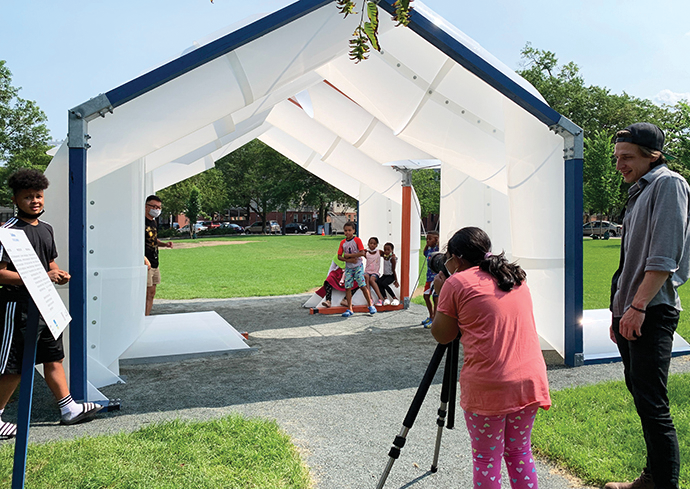Researchers plan to investigate the racial wealth gap as it relates to building and environmental design through a new collaboration between Syracuse University School of Architecture and the State University of New York College of Environmental Science and Forestry.
The project, Closing the Racial Wealth Gap through Environmental Justice and Participatory Design, is funded by a $100,000 grant from Syracuse’s Lender Center for Social Justice, which fosters an interdisciplinary approach to advancing racial justice, equity, and inclusion.
By combining research, practice, and teaching, the goal of the project is to consider solutions that make public spaces healthier, more equitable, and accessible, and to use design to empower marginalized communities through improved infrastructure, says Iman Fayyad, assistant professor of architecture at Syracuse and co-principal investigator for the project.
“The highlight of this project is its focus on participatory planning, a challenge that we will address through … technology and design, merging disciplines, and expertise.”
Eliana Abu-Hamdi, PhD
“There is a lot of opportunity to push our own disciplines in service of climate justice, sustainable building practices, and community involvement,” says Fayyad.
Entrenched systems, such as redlining and other harmful zoning policies and regulations, contribute to and exacerbate racial wealth gaps. With this understanding, researchers intend to engage communities using design technologies such as Building Information Modeling (BIM), a holistic design and management process, to empower communities in shaping their local environments.
“The highlight of this project is its focus on participatory planning, a challenge that we will address through … technology and design, merging disciplines, and expertise,” says Eliana Abu-Hamdi, PhD, associate dean for research at Syracuse’s architecture school and principal investigator for the project.
Initially, researchers will focus on environmental justice concerns, such as urban heat islands, accessibility, and construction technologies.
Subsequent efforts will involve site-specific implementation, including the development of a joint studio course in which students will research, design, and propose public infrastructure solutions for Syracuse communities. The curriculum will incorporate design research outcomes from the previous phase.
In the project’s third phase, the team will assess the applicability of their research and the BIM platform for various locations and community needs and facilitate knowledge transferability for similar concerns in different communities. Findings, proposals, and future speculative variations will be presented at the annual Lender Center for Social Justice symposiums in 2024 and 2025.●
This article was published in our October 2023 issue.




















